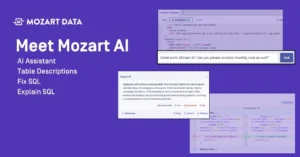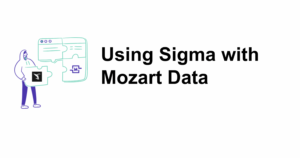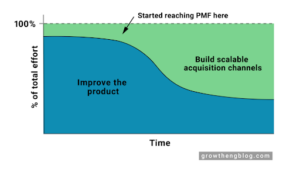This post was written by Shai Weener on Mozart’s data analyst team.
It was ~ my 4th day at Mozart Data and the company had their ~ bi-annual hack-day, where we spend two days intensely working on various projects we think would benefit the company. Even though I was still deep in my onboarding, given my previous experience, I was excited to get this opportunity to dive right in. I was coming in with an undergraduate degree in statistics, four years of working in social science research utilizing regression models, and a masters in analytics that taught me SQL, R, Python, Machine Learning, and data science. I even had a data science internship that utilized machine learning models and Jupyter Notebooks for a pharmaceutical company. I don’t say this to brag, I say this to show that I wasn’t new to data in any way, I was just new to the tech space. Thus, I was under the impression that I could easily just slide into my role at Mozart and provide some good value. Obviously I’d have to learn some of the specifics – like where our data comes from, what program we use to analyze / visualize the data, what I’m measuring; but I know numbers, I know data, I know storytelling, I’ve built dashboards before – what could be so complicated?
I was wrong. First and foremost, because the tech space has a complete language of its own. Even from the get go, I had more acronyms thrown at me than my entire year of high school chemistry combined. It wasn’t just CRMs anymore. I was being told about ETL and reverse ETL. Databases vs Data warehouses with a sprinkle of Data lakes. MongoDB, AWS, dbt. Snowflake and BigQuery. Then there’s Mode, Sigma, Hightouch, Fivetran, Portable. Before I started, I wasn’t fully aware of all the components of a tech stack, and now I was feeling overwhelmed by trying to figure out how to build one. With so many players, so many letters, so many subtle pros and cons, it was hard to fathom that building a tech stack with three to five different platforms was actually going to simplify analytics for anyone. How could this many players not feel like overkill for a company new to the analytics space?
So if you’re feeling that way, I get you. I’ve been there. But don’t let all of the acronyms, the big scary alphabet, limit your ability to grow and derive benefit from your data. If my experience can tell you anything, it’s that the key to building out your first data stack is to not rush into it and try to figure out every bell and whistle from the get go. Find a person or people who know what they’re doing who can help you ramp up.
For me, it took me months to feel even somewhat settled into all of the different acronyms and programs. But part of the reason I was able to properly learn was because I was able to rely on some of my colleagues to be that person for me. I didn’t have to know everything about every component of the data stack all at once. (Don’t get me wrong, having that knowledge is a huge part of my job, so there definitely was some rush to get over the learning curve…) I was able to leverage the knowledge of those around me so that I could build my mental data stack component by component. For example, I was able to leverage the knowledge of my colleagues so that I could first learn about Snowflake and our data warehousing. Then I could learn about how Fivetran (and Portable) help people get their data into the warehouse. Then I could pick up the flow of reverse ETL with Hightouch. I then got confused between some of the differences in what ETL and reverse ETL was doing, why people need anything more than just dbt, etc. But, again, I had people who helped me through it.
So here’s what I’ll say: If you’re looking to build out your data stack, it isn’t all or nothing. You don’t have to go from downloading raw data and creating Excel formulas directly into a self-managed warehouse/ETL/BI set up. If you’re feeling overwhelmed by your first foray into the data stack, you’re not alone. Whether with Mozart or not, there are people and teams out there who can support you.
Look, obviously from my perspective, I can tell you that the Mozart bundle is great. It gives you a Snowflake warehouse and Fivetran/Portable ETL, managed by us and controlled by you. It allows you to build the foundations of what you need and then iterate – starting with maybe just your Stripe and Salesforce data, and later bringing in your Postgres. (Oh, Postgres. Yet another term that made me be like, wtf). But even more than the product, the team is really good at helping you simplify the things you need to know, tabling the things you don’t, and then making good recommendations when the things you don’t need to know becomes things you do. I know I’m biased, because I’m on the team, but really if nothing else, the team I get to work with really helps ramp you up, so you don’t have to get overwhelmed by the alphabet of SaaS companies.


